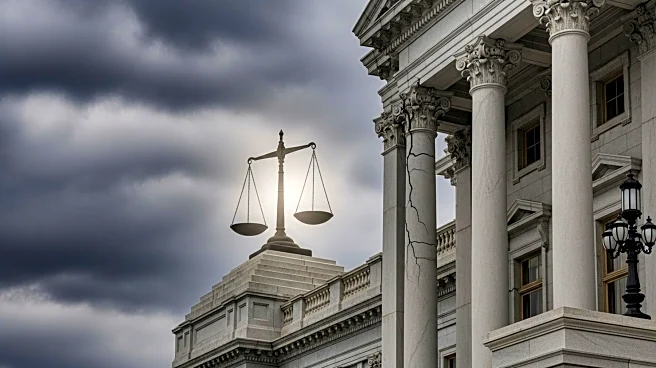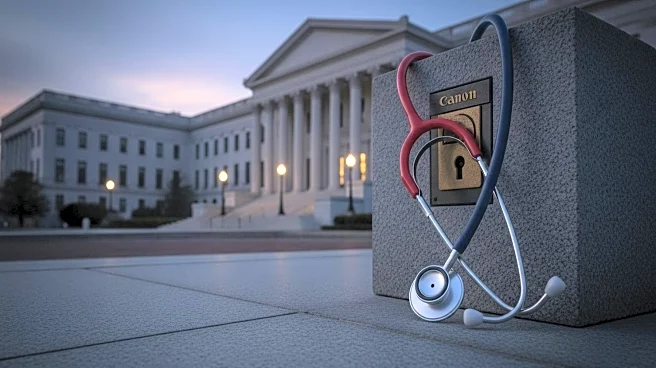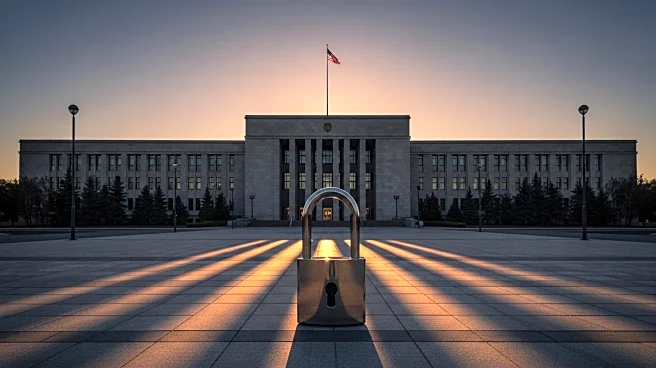What's Happening?
The U.S. government shutdown has entered its seventh day as the Senate remains deadlocked over funding proposals. Both Democratic and Republican proposals failed to pass, with Democrats pushing for the extension of enhanced Obamacare subsidies and Republicans opposing its inclusion in the stopgap funding bill. The shutdown has led to significant disruptions, particularly in airports, where flight delays and staffing shortages are becoming increasingly common. President Trump has threatened further layoffs, adding to the uncertainty faced by federal workers already furloughed.
Why It's Important?
The ongoing government shutdown has far-reaching implications for the U.S. economy and public services. The deadlock in the Senate highlights the deep political divisions that are impacting the government's ability to function effectively. The shutdown is causing significant disruptions in air travel, affecting both passengers and airline operations. Additionally, the threat of further layoffs could exacerbate economic instability and increase pressure on federal employees. The situation underscores the need for bipartisan cooperation to resolve funding issues and prevent further harm to public services and the economy.
What's Next?
As the shutdown continues, pressure is mounting on lawmakers to reach a compromise. The impact on public services and the economy is likely to intensify, prompting calls for urgent action from both political leaders and affected stakeholders. The potential for further layoffs and economic disruptions may drive renewed negotiations, with the hope of reaching a resolution that addresses the concerns of both parties.
Beyond the Headlines
The shutdown raises broader questions about the effectiveness of the U.S. political system in addressing critical issues. It highlights the challenges of governance in a polarized environment and the potential consequences of political stalemates on public services and economic stability. The situation may prompt discussions on reforming budgetary processes to prevent future shutdowns and ensure more stable government operations.










